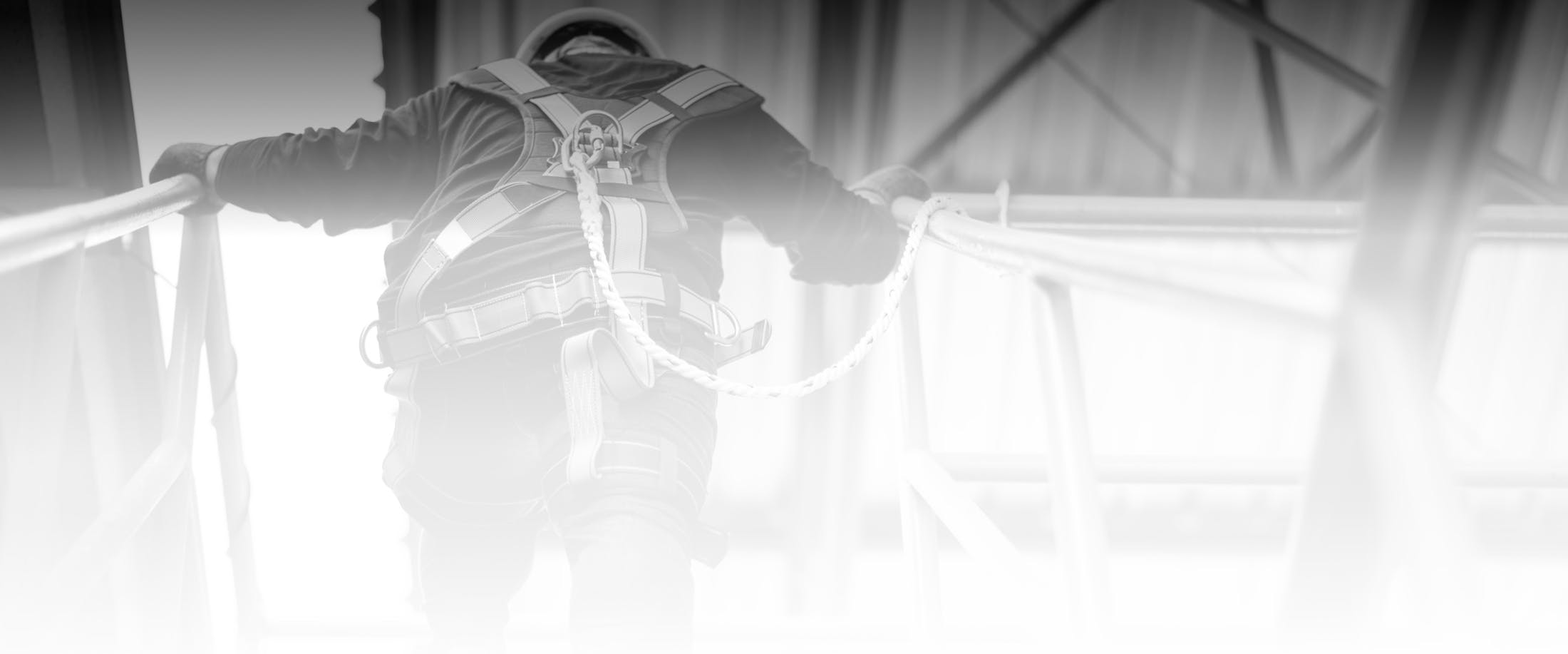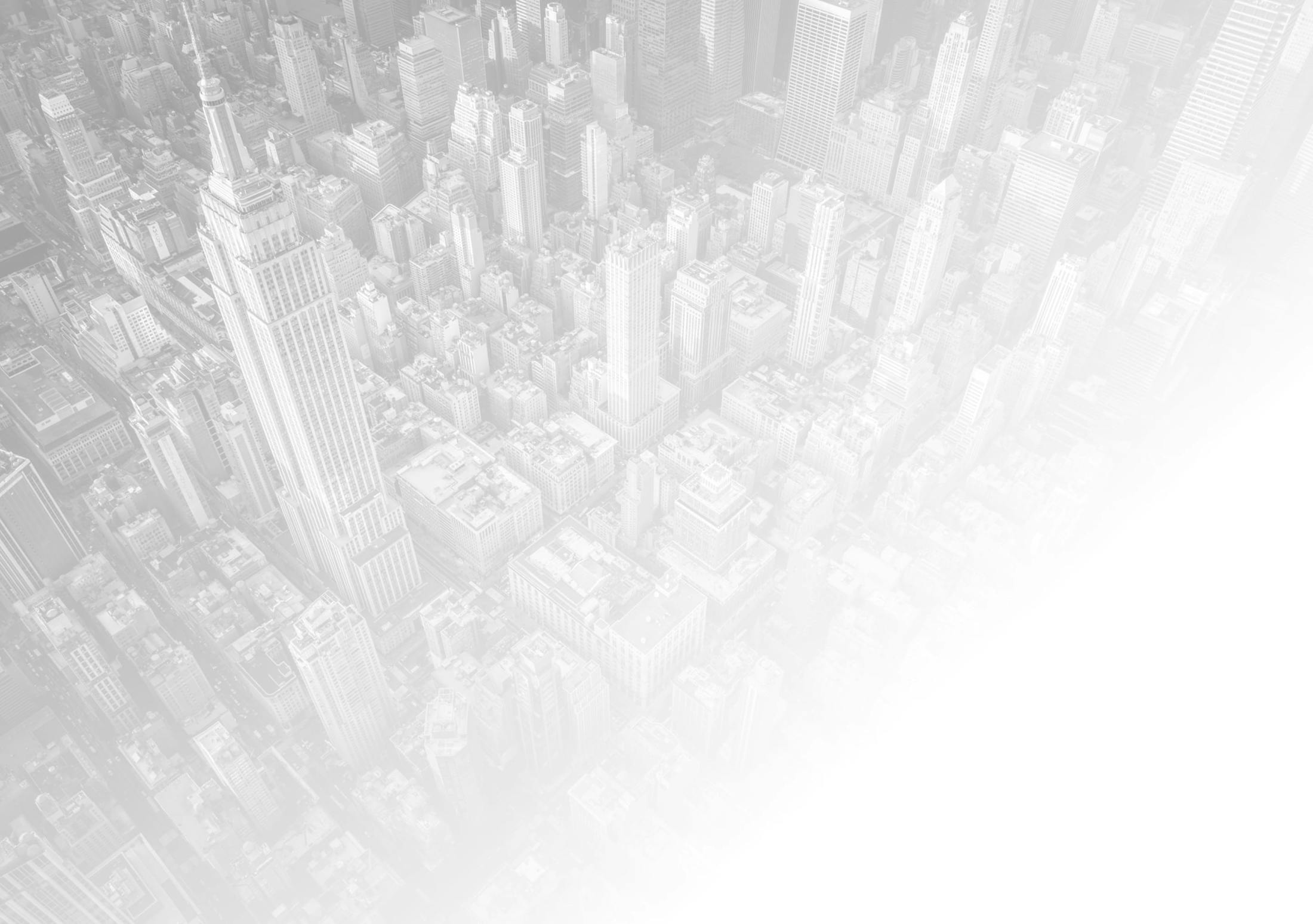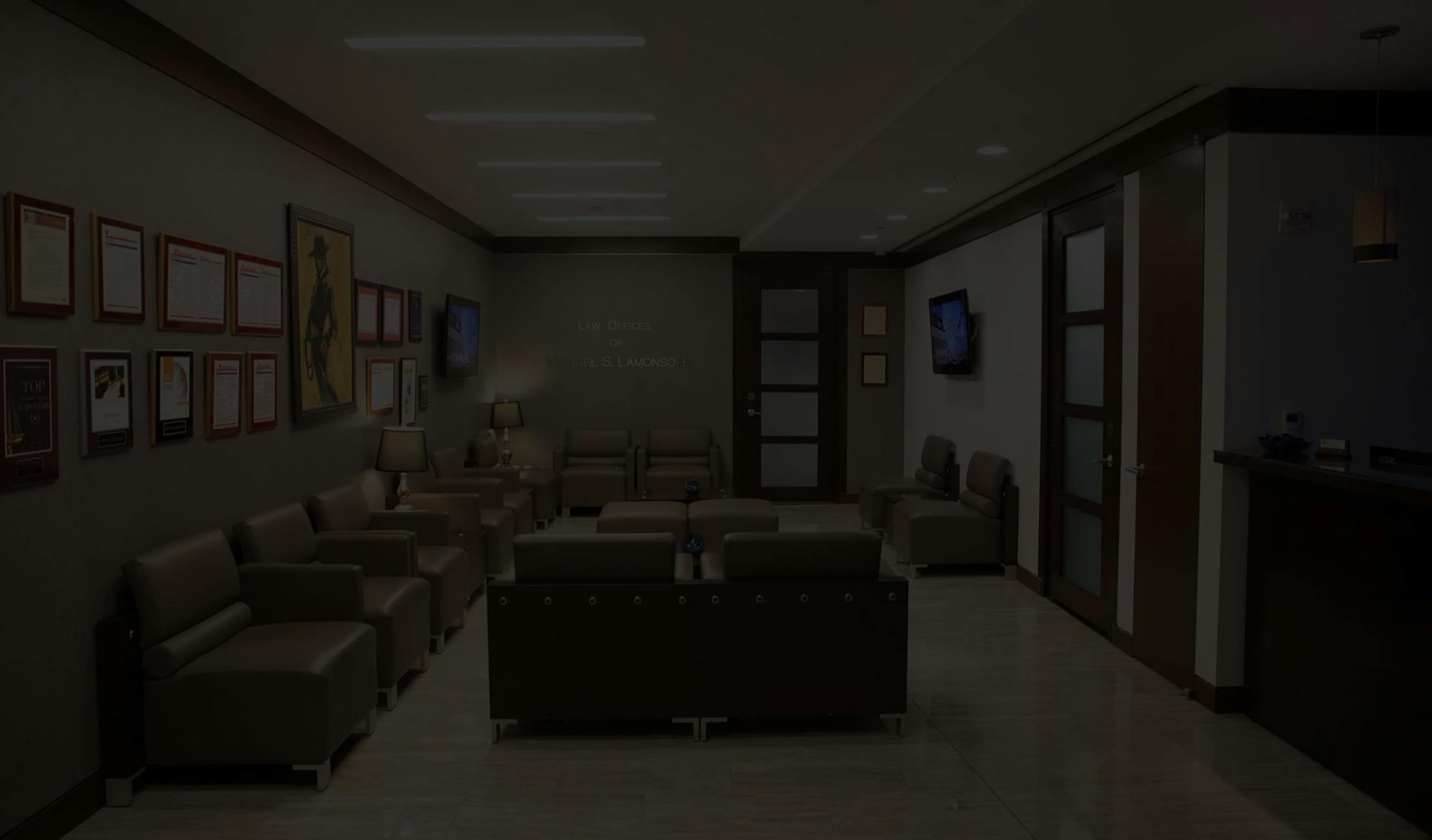The Law Offices of Michael S. Lamonsoff employs an unrelenting approach to get our clients the justice they deserve. Our personal injury lawyers in NYC will employ vigorous negotiation tactics to produce a successful settlement, or we will take your case all the way to trial. In either case, we have won exceptional awards for our clients who were victims of falling from high heights.
Falling from Heights Accidents on New York Construction Sites
Falls from heights consistently top the list of fatal accidents in the construction industry. According to OSHA (Occupational Safety and Health Administration), falls are the leading cause of death in construction.
These types of falls are a key element of the so-called "Fatal Four" – falls, struck-by object incidents, electrocutions, and caught-in/between accidents.

Falls from Heights are Included in OSHA “Fatal Four”
These four categories account for more than half of construction worker fatalities each year in the United States. Among them, falls from heights represent the most significant proportion, underscoring the urgency of compliance with safety protocols on New York construction sites. Roofs, scaffolds, ladders, building frameworks, elevator shafts, and exposed structural elements are all common fall locations.

Causes of Falls from Heights on NY Construction Sites
Unprotected Edges and Openings
These are a major contributor to fall-related injuries and fatalities. When construction teams fail to secure open-sided floors, stairwells, elevator shafts, roof perimeters, or floor openings with guardrails, toe boards, or proper coverings, workers are exposed to dangerous drop-offs. A simple misstep can result in a fall of several stories, usually with catastrophic outcomes.
Improper Scaffolding
Defective scaffolding poses a serious threat. Scaffolds must be properly designed, erected, and maintained to ensure structural integrity. Falls frequently occur due to missing guardrails, loose or unstable planks, failure to use fall arrest harnesses, or lack of proper bracing. Even a slight tilt or vibration on a poorly constructed scaffold can lead to collapse or worker ejection from the platform.
Defective or Misused Ladders
At New York construction sites, defective ladders are a recurring hazard. Ladders used on soft or uneven ground, extended beyond safe limits, or leaned against unstable surfaces can easily shift or tip. Additionally, failing to have a spotter while ascending or descending increases the chance of falling.
Weather Hazards
Construction contractors in a hurry to meet deadlines may overlook these hazards. Ice and snow accumulation, slippery rain-soaked surfaces, and gusting winds can make balance and traction nearly impossible on high surfaces. Employers must account for weather-related risks in their safety protocols.
Lack of Fall Protection Equipment
Defective or inadequate fall protection equipment, such as personal fall arrest systems, properly installed anchor points, guardrails, or safety nets dramatically increases fall risk. Even when equipment is available, failure to train on its proper use can nullify its protective value.
Poor Training and Supervision
Cost-cutting on training and supervision can amplify all of these risks. Workers unfamiliar with fall protection requirements, safe climbing techniques, or site-specific hazards may unintentionally put themselves in danger. Active oversight and ongoing training are critical to maintaining a safe work environment at elevation.

Injuries from Accidents Involving Falls from Heights for NY Construction Workers
Falls from significant heights may result in catastrophic or fatal injuries. Common injury types include:
- Spinal cord injuries: Falls can fracture or dislocate vertebrae, causing partial or total paralysis (paraplegia or quadriplegia).
- Traumatic brain injuries (TBI): A fall onto a hard surface from elevation may result in concussions, hemorrhages, or long-term cognitive impairment.
- Multiple fractures: Hips, legs, arms, ribs, and pelvis are highly susceptible to shattering in high-impact falls.
- Internal organ damage: The force of a fall can rupture organs such as the spleen, liver, or kidneys, requiring emergency surgery.
- Amputations: Machinery or metal framing structures involved in the fall can cause crushed limbs or traumatic amputations.
- Fatalities: Tragically, many workers do not survive falls from significant elevations, leaving behind grieving families and complex wrongful death claims.
New York Laws Related to Fall from Heights Involving Construction Workers
New York State provides some of the strongest legal protections in the country for construction workers injured in falls. Key statutes include:
New York Labor Law §240(1) - The Scaffold Law
This law holds property owners, agents, and general contractors strictly liable (absolute liability) for injuries suffered by workers due to inadequate fall protection while working at elevated heights. It covers ladders, scaffolds, hoists, pulleys, braces, irons, ropes, and other devices. The worker's own negligence is not a defense under this law; if proper fall protection wasn’t provided, liability is almost automatic.
New York Labor Law §241(6)
This law mandates that construction sites must adhere to specific provisions of the New York State Industrial Code. Violations of these detailed safety rules (such as inadequate guardrails or failure to inspect fall protection equipment) can be grounds for liability.
New York Labor Law §200
This is a more general provision requiring owners and contractors to maintain safe worksites. Liability under this law usually requires proving that the defendant had notice or control over the unsafe condition.
Comparative Negligence vs. Absolute Liability
While most personal injury lawsuits require weighing the fault of both parties, Labor Law §240 imposes strict liability. This means a worker’s partial fault (e.g., not tying off properly) generally will not reduce the damages awarded.
OSHA Regulations to Prevent Falls from Heights for Construction Workers in NY
OSHA mandates a comprehensive fall protection program for construction sites. Key requirements include:
Fall Protection Systems
These are central to OSHA’s strategy to prevent falls from heights, which remain one of the deadliest hazards on construction sites. OSHA mandates the use of guardrails, safety nets, or personal fall arrest systems for any worker exposed to vertical drops of six feet or more. This applies not only to open edges and floors but also to scaffolds, ladders, roofs, and any elevated work surface.
Guardrail Specifications
The top rail must be installed at a height of 42 inches above the walking or working surface, with a midrail positioned halfway between the top rail and the platform. Guardrails must be constructed strong enough to withstand at least 200 pounds of force applied in any outward or downward direction to prevent workers from falling through or over.
Harnesses and Lanyards
These form the backbone of personal fall arrest systems. Workers must wear full-body harnesses connected to lanyards or lifelines anchored to secure points that can support a minimum of 5,000 pounds per worker. The system must be configured to arrest a fall quickly and minimize impact forces on the body, preventing severe injuries.
Scaffold Safety
OSHA regulations include strict guidelines on load capacities to prevent overloading, requirements for fully planked and secure platforms, safe access points like ladders or stair towers, and mandatory guardrails on all open sides. Scaffolds must be inspected regularly to maintain structural integrity.
Ladder Safety
Ladders must be inspected daily for defects such as cracked rungs or loose hardware, have slip-resistant feet, and extend at least three feet above the landing surface to ensure stable access. Workers must maintain three points of contact when climbing or descending.
Training
Proper training is a cornerstone of fall prevention. Employers are required to provide comprehensive fall protection training to all workers exposed to fall hazards. This includes teaching workers how to recognize fall risks, properly use fall protection equipment, and follow safe work procedures.
Inspections
Inspections of fall protection equipment and elevated work areas must be conducted regularly to identify and correct hazards before accidents occur, ensuring ongoing safety compliance on construction sites.

Potential Liable Parties in Fall from Height Accidents on NYC Construction Sites
Construction accidents typically involve multiple layers of responsibility. Potential liable parties include:
- General contractors: Responsible for overall site safety and ensuring subcontractors comply with safety protocols.
- Property owners/developers: Under New York Labor Law §240 and §241, they can be held strictly liable for failing to provide safe elevation devices.
- Subcontractors: If a subcontractor failed to follow safety rules or did not properly supervise its workers, it may share liability.
- Equipment manufacturers or rental companies: If a scaffold, ladder, harness, or lanyard fails due to design or manufacturing defect, the company supplying it may be held accountable.
- Engineers and architects: In rare cases, design flaws that create unguarded drops or unsafe access points could result in liability for professional negligence.
- Site safety managers: Tasked with daily inspections and enforcement of fall protection measures. Failure to perform these duties may implicate liability.
Types of Training and Safety Equipment Contractors Should Provide to Construction Workers in New York
Preventing falls from elevation requires a multi-faceted approach:
- Comprehensive fall protection training: Workers must be trained to recognize fall hazards, inspect equipment, and properly use fall arrest systems. Training should be provided in the worker’s primary language.
- Personal fall arrest systems (PFAS): These include full-body harnesses, lanyards, retractable lifelines, and secure anchor points. All gear must be regularly inspected and replaced when damaged or worn.
- Guardrails and toe boards: Permanent or temporary guardrails must be installed at the edges of all elevated work platforms, and toe boards should be used to prevent tools or materials from falling.
- Scaffolding with integrated safety features: Scaffolds should include proper guardrails, stable decking, and safe access points (ladders or stair towers).
- Ladders and aerial lifts: Workers should be trained on ladder selection, proper placement, and safe use. Aerial lifts must be used with fall protection systems and be operated only by trained personnel.
- Controlled access zones: Areas where fall hazards exist should be clearly marked, barricaded, and restricted to trained workers wearing fall protection gear.
- Site-specific safety plans: Contractors should develop written fall protection plans that consider the unique risks and layout of each construction site.
- Regular safety audits and toolbox talks: Ongoing education, hazard assessments, and reinforcement of safety protocols help maintain a culture of vigilance and accountability.
Frequently Asked Questions
What compensation can I recover if I fall from a height on a New York construction site?
In addition to workers’ compensation benefits, injured construction workers may potentially have personal injury claims against third parties such as contractors, equipment manufacturers, or property owners. Compensation in third party lawsuits can cover medical expenses, lost wages, pain and suffering, and in wrongful death cases, funeral costs and loss of financial support.
Can I sue if my employer violated OSHA fall protection rules?
Yes. OSHA violations can serve as strong evidence in a personal injury lawsuit. If your employer or a subcontractor failed to provide proper fall protection, you may hold them liable for negligence, which can increase your potential compensation beyond workers’ comp limits.
How long do I have to file a claim after a fall from height accident?
The statute of limitations for personal injury claims in New York is generally three years from the date of the accident. Workers’ compensation claims usually must be filed within two years. It’s critical to act promptly to protect your rights.
Are there special legal considerations if a subcontractor’s employee falls?
Yes. Liability can extend beyond the immediate employer, depending on the facts of the case. General contractors and property owners may share responsibility if they failed to enforce safety standards or properly supervise the site.
How important is expert testimony in fall from height cases?
Expert witnesses like safety engineers and accident reconstructionists can provide factual analysis of site conditions, equipment, and compliance with regulations, strengthening your case significantly.
Top NYC Construction Accident Attorney “The Bull” is Ready to Fight for You
If you or a loved one suffered a fall from height accident on a New York construction site, you need aggressive and high-powered legal representation. At The Law Offices of Michael S. Lamonsoff, PLLC, we combine 150+ years of litigation experience and a formidable record of over $500 million recovered for injured workers.
Our founding attorney Michael Lamonsoff “The Bull” will fight tenaciously for your maximum compensation and support you every step of the way. To schedule your free consultation, call us at 212-962-1020 or fill out this online contact form.

